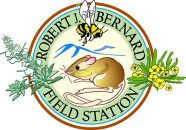Pellitier, Peter (2014)
Fire and Arbuscular Mycorrhizal Fungi in Grass Invaded and Intact Coastal Sage Scrub.
Bachelor of Arts, Pomona College, Biology.
Advisor: Frances Hanzawa.
Mycorrhizal fungi inhabit the soil of the majority of terrestrial ecosystems and enter into ecologically significant mutualisms with most vascular plants. Mycorrhizal fungi can structure entire plant communities and aid in individual plant nutrition and pathogen resistance. Fire has a strong role in many ecosystems worldwide but can decrease the abundance of mycorrhizae and alter the community composition. In Southern California, where fire frequency and intensity has been strongly altered in the past 50 years, the effects of fire on arbuscular mycorrhizal (AMF) fungi in the Coastal Sage Scrub (CSS) community have yet to be conclusively studied.
This study examines how a human ignited fire in the Bernard Field Station (BFS) in Claremont CA, impacts the abundance and the composition of the AMF spore community. Soil cores were examined in intact Coastal Sage Scrub vegetation and in exotic grass invaded areas both within the burned and unburned portions of the BFS.
The results of this study indicate that grass invaded CSS have lower abundances and a different AMF community composition than does intact CSS. Fire can also have a variable influence on the abundance and composition of each of these mycorrhizal communities. In intact CSS, mean AMF abundance was decreased after fire, but in invaded CSS, there were more mean AMF spores after fire. Unburned grass invaded CSS supported a community of AMF spores that was significantly different than unburned intact CSS. After the fire had occurred, the AMF assemblages in both habitat types were ultimately similar. In sum, these results highlight the importance of fire as a management tool for the restoration of the AMF community structure within invaded CSS soils and caution against generalizations about the affects of fire on the abundance and composition of AMF communities across habitat types.
